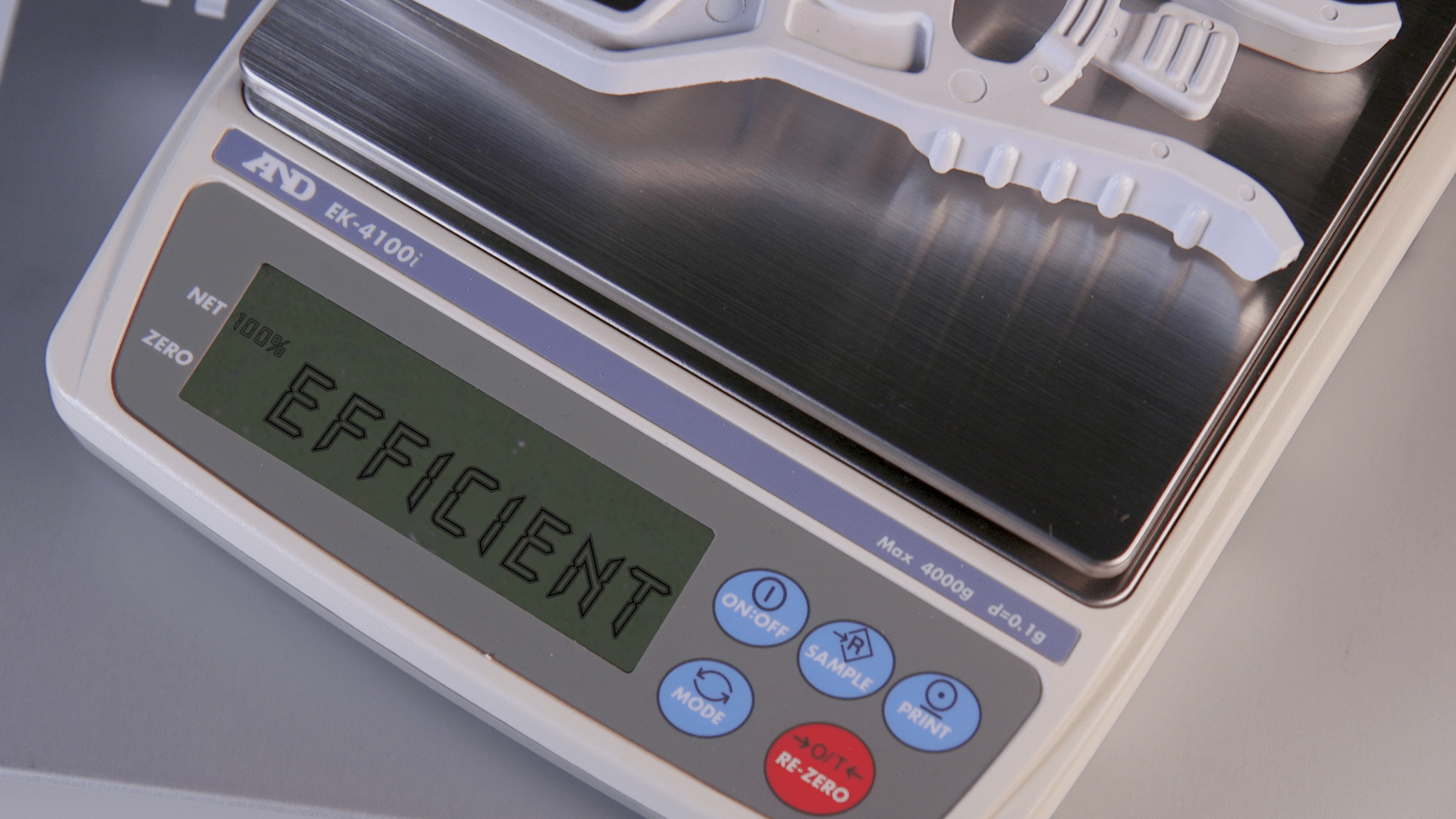Material Reduction in Sustainable Product Development
Material reduction in plastic components aligns with multiple sustainability objectives, offering a practical way for manufacturers to lower their environmental impact without compromising product integrity. Lighter plastic parts translate to lower resource consumption by minimizing dependency on virgin plastics and reducing waste generation during production. As industries navigate the transition toward more sustainable manufacturing practices, material reduction in plastic components has emerged as a key strategy for minimizing consumption of non-renewable petroleum and optimizing production costs. This approach to material reduction — also referred to as lightweighting — is gaining traction across various sectors, from consumer goods to enclosures for electronics and medical devices.
While material reduction focuses on using less plastic overall, another common approach to sustainability is the use of bioplastics or biodegradable fillers. These alternative materials, derived from renewable sources or engineered to break down more readily than traditional plastics, offer environmental benefits but do not necessarily reduce the total amount of plastic used in a product. In contrast, lightweighting strategies aim to minimize material consumption entirely, regardless of whether the material is petroleum-based or bio-derived. When used together, these techniques can maximize sustainability by reducing material consumption while also replacing a percentage of the remaining plastic with bio-based alternatives.
As regulatory pressures and consumer demand for eco-conscious products continue to rise, companies that adopt innovative material reduction techniques position themselves as sustainability leaders in their industries. By integrating lightweighting principles into component design, Catalyst can achieve substantial sustainability benefits while enhancing performance, reducing costs, and improving overall production efficiency.
Engineering Innovations for Lightweight Plastic Components
Advanced design, engineering and manufacturing techniques enable substantial material reduction without sacrificing durability or performance. Through strategic design modifications and process enhancements, Catalyst can produce strong, light, and efficient plastic components.
One of the most effective methods for reducing material use while maintaining strength is structural optimization through design. Simulation-driven tools, such as topology optimization and finite element analysis (FEA), allow engineers to analyze material distribution and identify opportunities for reduction without compromising durability. By incorporating ribbed or corrugated geometries, plastic components can achieve the necessary strength while using less material than solid structures. Similarly, hollowing techniques—such as creating internal voids—can significantly decrease weight while maintaining structural integrity.
Material selection also plays a crucial role in lightweighting strategies. Replacing virgin plastics with post-consumer recycled (PCR) resins, post-industrial (PIR) resins or bio-based alternatives helps reduce environmental impact while maintaining or even improving performance. Additionally, high-performance engineering polymers can offer superior strength at a lower weight, enabling the design of thinner, more efficient components.
When combined with purposeful design, precision molding techniques further contribute to lightweighting efforts. Thin-wall molding, for example, allows for ultra-thin yet durable plastic parts, reducing material usage without sacrificing mechanical properties.
Beyond Sustainability: The Broader Benefits of Lightweighting
While sustainability is a key driver of material reduction efforts, lightweighting offers additional benefits that extend beyond environmental considerations. Reduced material consumption leads to lower production costs, as manufacturers spend less on raw materials and optimize process efficiencies. Additionally, lighter components can improve product usability in some cases when user comfort and ergonomics are a main goal.
In sectors like automotive and aerospace, lightweighting plays a pivotal role in enhancing fuel efficiency, reducing emissions, and improving performance. Similarly, in medical device manufacturing, lighter components can improve portability and ease of use, making products more convenient for healthcare providers and patients alike.
Driving Innovation for a More Sustainable Future
Material reduction in plastic components is more than just a cost-cutting measure, it is a strategic approach that benefits businesses, consumers, and the environment. While the use of bioplastics and biodegradable fillers plays an important role in reducing reliance on fossil-fuel-based plastics, these materials alone do not address the need to reduce overall material consumption. By integrating lightweighting techniques with responsible material selection, we can create smarter, more efficient products that align with sustainability goals.
At Catalyst, we help organizations future-proof their products through strategic material reduction initiatives. Our expertise in lightweighting, advanced material selection, and precision manufacturing empowers businesses to reduce environmental impact, optimize costs, and gain a competitive edge in sustainable product development.
To explore how lightweighting can enhance your next project, simply Contact Us.
